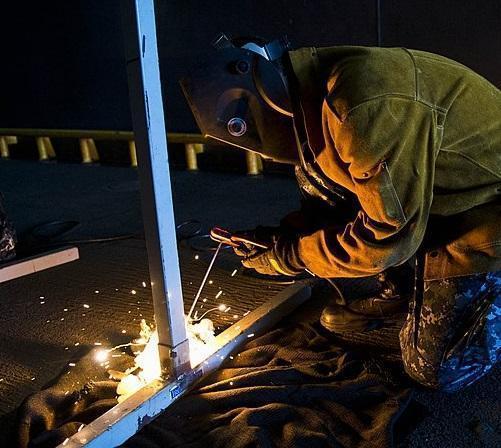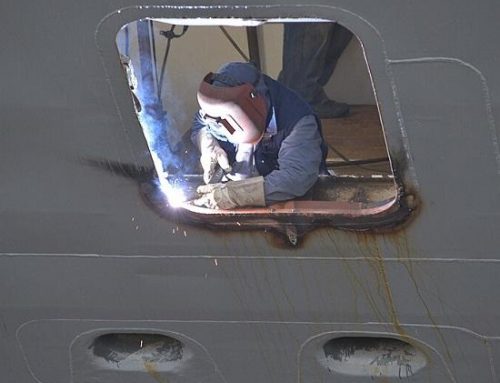Welding is a powerful tool that allows us to create strong and durable structures, but it also comes with its share of hazards. According to the Occupational Safety and Health Administration (OSHA), welding, cutting, and brazing are the fourth most common cause of workplace fatalities due to fires and explosions. According to the National Institutes of Health (NIH) about 110 million worldwide are exposed to welding fumes at work, which can lead to lung cancer, lung fibrosis, and other lung diseases.
That’s why I’m here to talk to you today about the top 10 hazards of welding work and how to avoid them. By being aware of the hazards and taking appropriate precautions, you can stay safe while welding. Remember to protect yourself from fire and explosions, UV radiation, metal fumes and gases, electrical shock, burns, falling hazards, noise-induced hearing loss, slips, trips, and falls, musculoskeletal disorders and follow proper welding procedures and guidelines.
As you can see, welding can be a hazardous profession if proper precautions are not taken. In the following sections, we will go into more detail about each of these hazards and provide tips on how to avoid them. It is important to understand the potential dangers of welding and take the necessary steps to protect yourself and those around you. By doing so, you can ensure that you are welding safely and effectively.
- Be aware of the potential for fire and explosions. Welding produces sparks and intense heat, which can easily ignite flammable materials. Always make sure that the area where you’re welding is clear of flammable materials and that proper fire extinguishing equipment is nearby. Always keep a fire extinguisher nearby and make sure that you know how to use it. Additionally, make sure that you are aware of the fire code and regulations in your area, and that you follow them strictly.
- Protect yourself from the harmful UV radiation produced by welding. Welding can cause severe damage to your eyes and skin, so always wear appropriate PPE such as a welding helmet with a face shield, gloves and protective clothing. Welding helmets are designed to protect your eyes and face from the harmful UV rays that are emitted during welding. Additionally, it’s important to protect your skin by wearing protective clothing that covers as much of your body as possible. This will help to prevent sunburn and other skin damage.
- Be aware of the potential for metal fumes and gases. Welding can release harmful fumes and gases that can be toxic to inhale. Always make sure that you’re working in a well-ventilated area and that you’re wearing a respirator if necessary. Welding can release fumes and gases that can be harmful to your health if inhaled. To avoid these hazards, always make sure that you are working in a well-ventilated area and that you are using a respirator to protect your lungs.
- Be aware of the potential for electrical shock. Welding involves the use of electricity, so it’s crucial to make sure that your equipment is properly grounded and that you’re wearing rubber-soled shoes. It’s also important to make sure that your equipment is in good working condition and that you are following the manufacturer’s instructions for use. Additionally, it’s a good idea to take a basic electrical safety course to learn more about how to safely work with electricity.
- Be aware of the potential for burns. Welding involves the use of intense heat, so it’s important to be aware of the potential for burns and to always wear appropriate PPE such as gloves and protective clothing. Welding gloves are designed to protect your hands from the intense heat that is produced during welding. Additionally, make sure that you are aware of your surroundings and that you are aware of the potential for contact with hot surfaces.
- Be aware of the potential for falling hazards. Welding often takes place at height, so it’s essential to use proper fall protection equipment such as harnesses and lanyards. Make sure that you are using a harness and lanyard that are appropriate for the job and that they are in good working condition. Additionally, make sure that you are aware of the fall protection regulations in your area and that you are following them strictly.
- Be aware of the potential for noise-induced hearing loss. Welding can be loud, so it’s important to wear earplugs or earmuffs to protect your hearing. It’s also a good idea to take a break from the noise if you are feeling fatigued or if you are experiencing ringing in your ears. Additionally, make sure that you are aware of the noise regulations in your area and that you are following them strictly.
- Be aware of the potential for slips, trips, and falls. Welding often takes place in cluttered and cramped spaces, so it’s important to be aware of the potential for slips, trips, and falls and to take appropriate precautions. Make sure that the area where you are working is clean and well-lit. Additionally, make sure that you are aware of your surroundings and that you are aware of the potential hazards. Keep walkways clear of debris and cords, and pay attention to any slick or uneven surfaces. Use non-slip mats or rugs if necessary.
- Be aware of the potential for musculoskeletal disorders. Welding can involve repetitive motions and awkward postures, which can increase the risk of musculoskeletal disorders such as carpal tunnel syndrome. To reduce the risk of these disorders, take frequent breaks to stretch and move around. Try to change up your posture and position as much as possible. Additionally, make sure that your workstation is ergonomically designed, and that your tools and equipment are adjusted to fit your body.
- Follow proper welding procedures and guidelines. Welding can be dangerous if done incorrectly or without the right equipment. Make sure that you are following the manufacturer’s instructions for your welding equipment and that you are using the right equipment for the job. Additionally, make sure that you are aware of the welding regulations in your area and that you are following them strictly. This will help to ensure that you are welding safely and effectively.
In conclusion, welding can be a dangerous profession if proper precautions are not taken. By being aware of the hazards and taking appropriate precautions, you can stay safe while welding. Remember to protect yourself from fire and explosions, UV radiation, metal fumes and gases, electrical shock, burns, falling hazards, noise-induced hearing loss, slips, trips, and falls, musculoskeletal disorders and follow proper welding procedures and guidelines. By following these tips, you’ll be able to weld effectively and safely.










